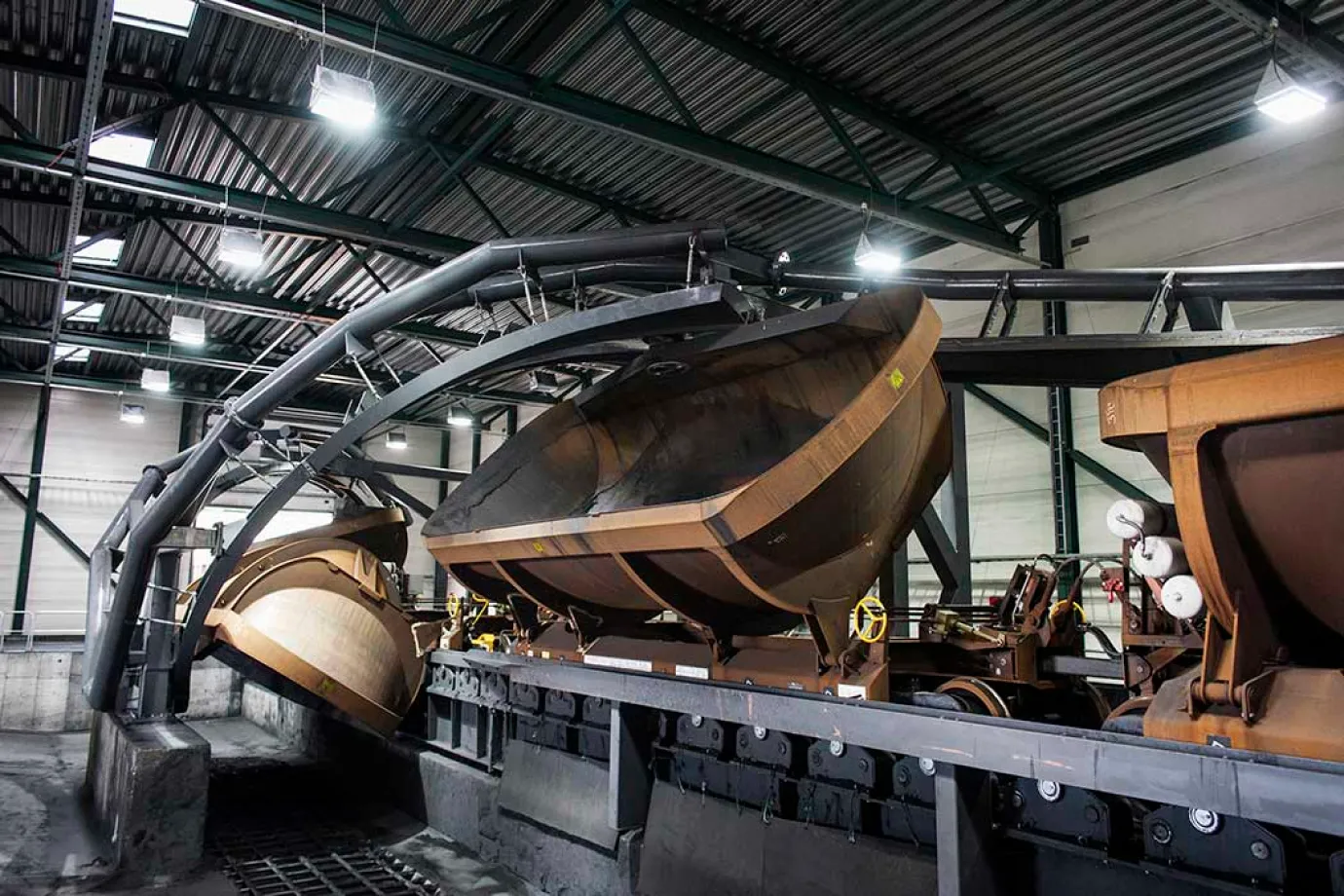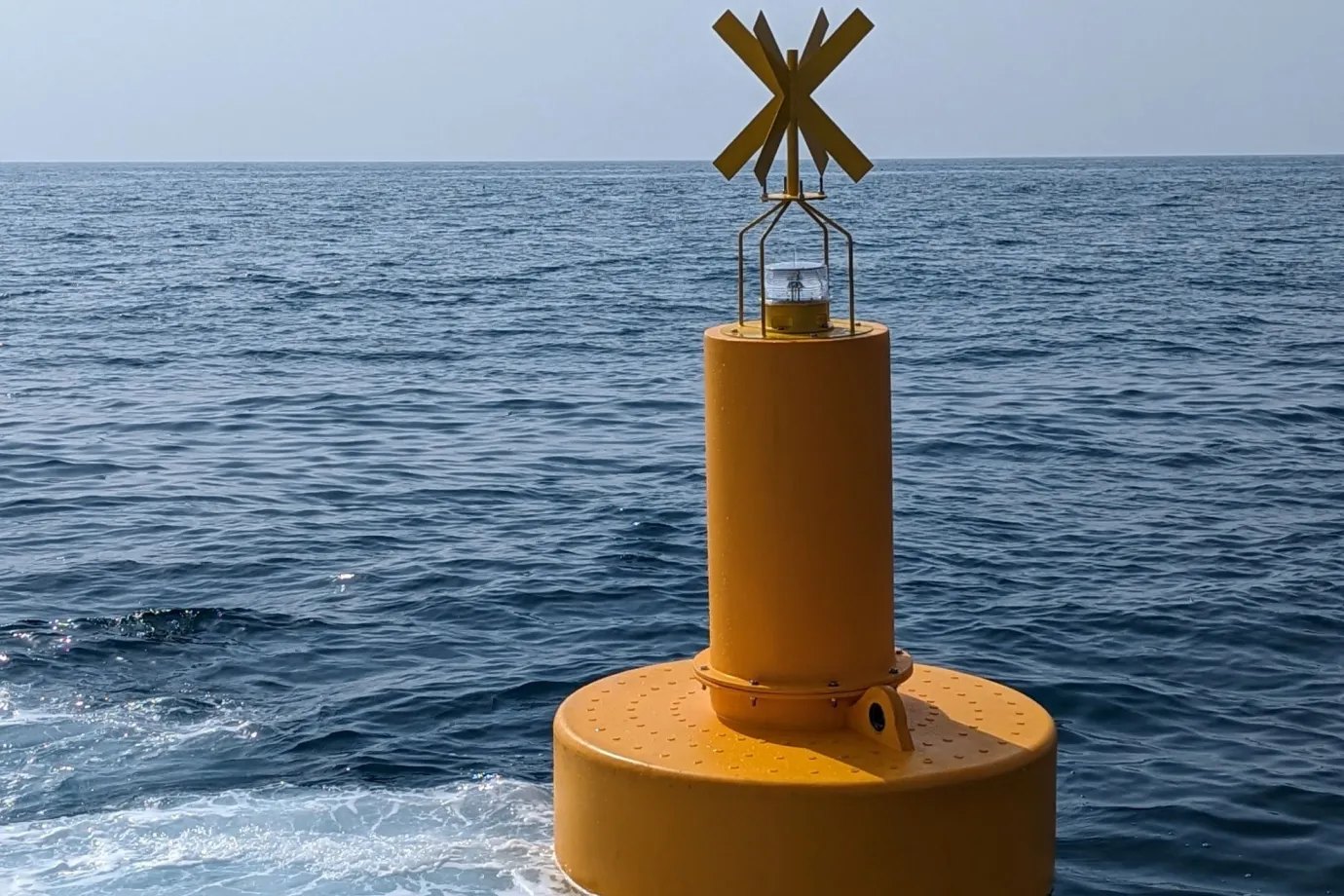Handling a large quantity of materials is a critical process that may lead to potential challenges. One of the most common challenges is unloading, especially in the railway industry. Unloading bulk materials from railcars or freight wagons often requires special and reliable equipment, which is not only time-consuming but also incurs a substantial expense. This is why unloading systems are designed in various types, meeting the primary needs properly. In this blog post, we delve into the different types of railcar unloading systems for bulk materials, compare them specifically, and provide any other details you need to know about them.
Maximize your offloading speed and minimize downtime with our modular “freight wagons“, built for smooth bulk material handling.

What Are the Railcar Unloading Systems?

Railcar unloading systems are setups used to discharge bulk materials (e.g., ore, grain, coal, cement, etc.) from railcars or freight wagons to the unloading stations. These systems are efficient in the mining or railway construction industries, where safe and rapid unloading is crucial. By offering a more controlled process, railcar unloading systems prevent material loss significantly and are also efficient in discharging sensitive materials. In contrast to manual labor that requires direct human interaction, railcar unloading systems can be a safer and more straightforward method. However, these systems are provided in various types based on the method used, unloading material, and railcar design.
Types of Freight Wagon Unloading Systems for Bulk Materials

Railcar offloading systems vary depending on several factors. The most critical factor is the type of freight wagon or railcar design. For instance, the unloading system used for hopper freight wagons (bottom dumpers) is different from that used for tank freight wagons. On the other hand, the dumping system used to unload the bulk solid materials can be different from the one used for sticky materials. Here are the most common freight wagon unloading systems with their features and applications:
Pneumatic Unloading Systems
The pneumatic unloading system is a common type where air pressure is used to transfer the bulk materials from railcars to the unloading storage. Due to using the pneumatic method, this railcar dumping system is suitable for unloading dry bulk materials. The pneumatic unloading system is performed in various methods. For instance, the materials can be removed from the railcar using a vacuum pump, which is also known as the vacuum unloading system.
Tippler Unloading System
The tippler unloading system refers to tipping or tilting freight wagons to rapidly unload the materials using gravity. In this system, the railcar is mounted on specific mechanical equipment, which rotates the wagon to unload bulk materials, such as ore, coal, and minerals. The tippler unloading system is ideal for open hoppers and freight wagons equipped with no roof or a removable roof. Therefore, the materials are dumped from the side or top of the freight wagon based on its type and design.
Freight Wagon Unloading Solutions

In cases where the pneumatic unloading system and tipplers are inefficient, the manufacturer companies offer an unloading solution, including customized designs and specific equipment aligned with the type of freight wagons and cargo. For example, the hopper freight wagons are equipped with gates on the bottom to unload the materials between the rail tracks.
A Comparison Between Different Types of Railcar Unloading Systems
There are three common types of railcar offloading systems, each is designed for various types of freight wagons and offers a specific method. But the question is: which railcar offloading system is better? In fact, these three types of unloading systems differ from each other and are performed in totally different methods. However, we compare them based on their common features and operations in the table below to clarify this concept.

Traditional Railcar Unloading Systems Vs Advanced Solutions

The railcar unloading process was formerly performed through manual labor. Mechanical equipment and machines were also used to proceed with unloading the railcars, including screw conveyor, vibrator or shaker, unloading pit, belt conveyor, and hopper. Some of the freight wagons were designed with a hopper body or equipped with additional equipment like hopper gates and discharge doors to simplify this process. However, these traditional railcar offloading systems are not only time-consuming but also overwhelming and hazardous. This is why advanced railcar unloading solutions have emerged to enhance this process.
With the adoption of advanced methods, the freight wagon unloading process has become increasingly automated. Pneumatic railcar unloading systems and wagon tipplers are among the most widely used examples of modern solutions, offering significant improvements over manual labor and traditional unloading equipment. However, customized unloading solutions that are engineered to match specific wagon designs and material requirements represent the latest and most sophisticated advancements in railcar unloading technology, which are a budget-friendly and straightforward choice.
ADOR’s Innovation in Freight Wagon Unloading Systems

As experts in the railway industry, ADOR provides innovative loading and unloading solutions. By putting the customers’ needs as a priority, we not only design customized freight wagons but also offer a loading and unloading package with them, which utilizes cutting-edge technology to automate and speed up the process of material handling. Here are the advantages of our innovative unloading solutions:
See also: “ADOR’s Freight Wagons Overview“
Cost-Effectiveness
ADOR’s freight wagon unloading systems may incur a significant cost at first, but it is a long-term investment. Powered by the locomotive’s forward motion, our robust unloader requires no additional moving parts or power supply, and the combination of wagons and unloading stations also offers minimal maintenance, which all reduces the overall costs and makes ADOR’s freight wagon unloading solution budget friendly.
High Speed and Efficiency
Using cutting-edge technology can improve both efficiency and speed of the railcar unloading systems. ADOR’s advanced unloading solution is engineered to discharge bulk materials at rates of up to 25,000 tonnes per hour. This high performance is made possible through the simultaneous use of multiple unloading units, enabling continuous, uninterrupted material flow.
Eco-Friendly
Our freight wagon unloading systems operate with minimum noise, dust, and 57% less CO2 per transported tonne of commodity. Their sufficiency in electricity and power supply can also make them more environmentally friendly than ever.
Conclusion
In summary, railcar unloading systems play a vital role in material handling and simplify the process of offloading materials from freight wagons to storage or unloading stations. Provided in various types, railcar dumping systems can be used to unload a wide range of materials rapidly and straightforwardly. However, understanding how each freight wagon unloading system operates and how they differ is a crucial concept, which we proceeded with in this blog post.
Modern unloading approaches like rotary car dumpers can handle trains in motion, rotating wagons 180° to release contents, reducing cycle times to around 45 seconds per car and enabling over 10,000 t/h throughput. Others, like Helix Dumpers, discharge up to 25,000 t/h with no moving parts, powered by train movement alone.
– Pneumatic unloading uses suction or vacuum technology (ideal for fine, dry bulk materials like resins, grains, or powders) often transferring material directly into storage silos with minimal dust.
– Tippler (rotary) systems mechanically rotate the railcar to dump the load via gravity, perfect for open or detachable-roof freight wagons.
ADOR offers smart, energy-efficient unloading solutions using locomotive-driven unloader platforms. they deliver up to 25,000 t/h discharge rates, reduce CO₂ emissions by ~57%, and require almost no extra power or complex maintenance.
Absolutely, manufacturers offer modular unloading stations that adapt to various wagon designs, discharge methods, and bulk commodities, ensuring efficiency and flexibility.




